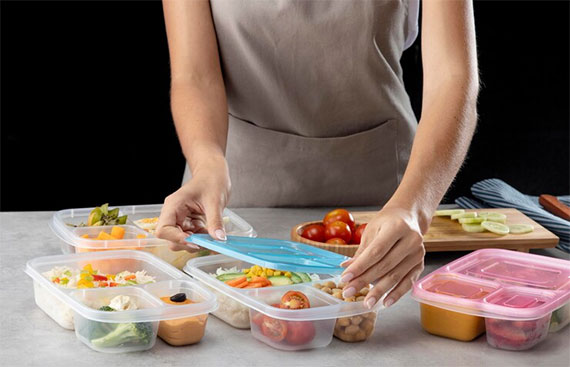The Art of Batch Cooking: Scaling Recipes for Mass Production

Batch cooking in the food industry stands as a culinary strategy that can significantly streamline operations and reduce costs for both professional chefs and food entrepreneurs. This method not only enhances efficiency but also maintains consistency in taste and quality, making it a favorite among those involved in food service and ecommerce ventures. Let's explore six key ways to successfully scale your recipes for mass production, ensuring your kitchen can handle the heat when the orders start rolling in.
Mastering the Math: Recipe Conversion Fundamentals
Scaling recipes isn't just about multiplying ingredients; it involves understanding how ingredient proportions change when you increase batch sizes. Start with the basics of recipe conversion, which requires a solid grasp of ratios and percentages. For instance, if a recipe calls for one egg to serve four, you'll need to determine how many eggs are required to serve 50.
It's not always a straightforward multiplication, as some ingredients do not scale linearly. Yeast in bread recipes, spices in sauces, and seasonings in marinades are typical examples where a little adjustment goes a long way. In addition, always consider the volume and capacity of your cooking equipment to ensure it can accommodate the increased quantities without affecting the cooking process or the final product's quality.
Leveraging Technology in Food Production
As technology is driving the food industry forward, innovative tools and software have become indispensable in the kitchen, especially when scaling recipes. Utilizing kitchen technology, like commercial-grade mixers and automated portioning devices, helps maintain consistency and speed up production.
Digital scales ensure precise measurements for large quantities, crucial for avoiding costly mistakes. Recipe management software can also play a pivotal role. These platforms allow you to adjust ingredient quantities automatically, save versions of scaled recipes, and even predict inventory needs based on production schedules.
The Role of Temperature and Cooking Times
Scaling recipes involves more than adjusting ingredient amounts; temperature and cooking time adjustments are also critical. When cooking in larger batches, heat distribution can become uneven, and the mass of the ingredients can significantly alter how a dish cooks.
For example, large pots of soup or stew may require lower cooking temperatures and longer times to reach the desired consistency and flavor integration. Conversely, baking large quantities of items like cookies or pastries might need higher temperatures for a shorter period to achieve uniform doneness. Understanding these nuances ensures that the scale-up of your recipes does not compromise the taste or texture of your food.
Collaborating With Private Label Food Manufacturers
When scaling your recipes for mass production, partnering with private label food manufacturers can be a transformative step. This approach not only allows for higher output but also ensures consistency in product quality, a critical factor when your name is on the label. Engaging with these manufacturers means transitioning from kitchen-scale production to industrial-scale, which requires precise recipe adjustments and adherence to food safety regulations.
Finding the right partner is crucial. On Keychain, an online platform, you can access a comprehensive list of food manufacturers who specialize in scaling recipes and production. Keychain simplifies the search, allowing you to filter potential partners based on capabilities, certifications, and previous clientele. This platform ensures that your scaled-up recipes are in capable hands, and your product quality remains high as quantities increase.
Streamlining Workflow and Production Lines
Effective scaling also involves optimizing the workflow and setup of production lines. This step is about more than just equipment; it's about creating an efficient flow that reduces bottlenecks and maximizes output without sacrificing quality. Consider the layout of your production area—everything from ingredient storage to the packaging line should be logically arranged to minimize unnecessary movement.
Investing in training for your staff to handle increased volumes and new equipment is also vital. Continuous training ensures that your team can operate efficiently and respond to any production challenges. Plus, regular reviews and updates to your workflow can give you significant improvements in productivity and help manage costs effectively.
Quality Control and Consistency Checks
Maintaining the integrity of your recipe on a larger scale necessitates stringent quality control measures. Implement regular consistency checks to ensure that every batch meets the established standards. This might include sensory evaluations, such as tasting for flavor accuracy, and technical assessments, like pH measurements and viscosity checks for sauces and liquids.
Automation can aid in consistency, with machines designed to deliver precise ingredient additions and mixing times. However, the human element remains essential. Train your staff on the nuances of each recipe so they can make adjustments as necessary, ensuring the final product remains true to its roots.
